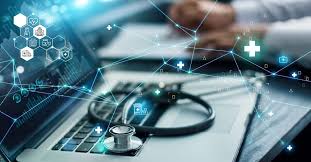At the heart of medicine is the Patient-Doctor Communication, where a skilled anamnesis paves the way for an accurate diagnosis, effective treatment, and lasting trust. These rhetorically effective words open the abstract of the study demonstrating that an artificial intelligence system can communicate and diagnose better than doctors.
More precisely, AMIE (Articulate Medical Intelligence Explorer), an artificial intelligence system developed by Google, generative ai healthcare, based on the Large Language Model (LLM) and optimized for diagnostic dialogue, demonstrated greater diagnostic accuracy and superior performance to doctors on 28 of 32 axes according to specialist doctors and on 24 of 26 axes according to patient actors.
Both patient actors and specialists rated AMIEs’ performance higher than GPs’ on metrics related to empathy and communication skills,” a finding consistent with a previous study in which AMIEs’ responses were found to be more empathetic than GPs’ responses to health questions posted on Reddit.
The Empathy
It is inevitable to ask whether it is the AI that is so good or we are so poor and even so lacking in empathy to be surpassed by a “machine” even in this area that we are used to considering so ours and so exclusive, despite the patients reproaching us for having neglected it for a long time – for so long that it is legitimate to ask ourselves if we have ever treated it.
The Steps of The Experiment
Artificial intelligence transforms medical history. AI and LLMs are charting a new course in goal-oriented patient dialogues. … This means a shift in the history of medicine towards more efficient, AI-driven, goal-oriented dialogues. The introduction of AI suggests a transformative impact on communication in general, not just healthcare.”
The Troubled Doctor-Patient Relationship
If we retrace the tormented doctor-patient relationship, we learn that throughout history there have been different models of doctors and patients, or better yet, of relationships between doctors and patients.
Traditional Doctors
Traditional doctors, according to the Hippocratic view, relied on little scientific knowledge, lacked diagnostic technology and specific pharmacology, and assumed a paternalistic position towards patients who in turn accepted them with obedience and without discussion.
The Modern Doctor
The modern doctor, according to Shorter, was born between the end of the 19th century and 1950, thanks to the possibility of identifying the nature of the disease, of formulating more or less exact diagnoses and of proposing a doctor-patient alliance: “it really seems that the patient and the doctor have started to collaborate to obtain the same result, one with trust and common sense, the other with the clear and convincing explanation of the matter in question”
The Postmodern, Current Doctor
The postmodern, current doctor can count on unprecedented technological and pharmacological development but he meets and sometimes clashes with patients who are increasingly scientifically informed and attentive to the emotional and physical signals of their organism and ready to challenge medical authority. From this point of view, the Internet has been a decisive watershed, marking the possibility of access to medical knowledge for anyone but at the same time putting the relationship of trust between doctor and patient into crisis.
A New Stage
Now the introduction, which still needs to be refined, of an artificial intelligence capable of communicating directly with the patient seems to mark another decisive stage in the doctor-patient relationship, one in which the doctor seems to be superfluous. Naturally, the authors of the study in question are the first to reiterate that the conversation with artificial intelligence cannot replace that with the doctor, that the results must be interpreted with caution and humility. Declarations of principle have already been heard a thousand times in other fields.
AI Offers Safe Patient-Doctor Communication
However, when the medical conversation with AI becomes sufficiently safe and above all economically profitable, we know what will become of these declarations of principle. Just as the times for the medical conversation, diagnosis and therapy are now increasingly limited, reduced and squeezed in the name of presumed efficiency, soon it could be even more efficient and therefore economically profitable to entrust the diagnostic evaluation to AI.
The tormented history of the doctor-patient relationship teaches us that the patient has had to endure much worse and the doctor too. Ultimately, the prospect is to have a better, faster diagnosis, proposed with greater tact.
AI Contribution in Patient-Doctor Communication
AI could contribute to better training doctors, helping them to focus on the main questions and leave out other irrelevant ones. Not only that. AI and its imaginable numerous progeny could become, rather than a rival, as it has often been and continues to be with the Internet, a new terrain of collaboration between doctor and patient, the symbol of a pact of trust between the two. Finally, instead of hiding behind the excuse of a relative who is a doctor, the Internet consulted casually and without necessarily having to resort to the opinion of a second specialist, both the doctor and the patient would have at their disposal a tool that improves not only the competence and scientific precision but also the intellectual honesty and therefore the relationship of trust between the two. Because, “the doctor is the medicine”
